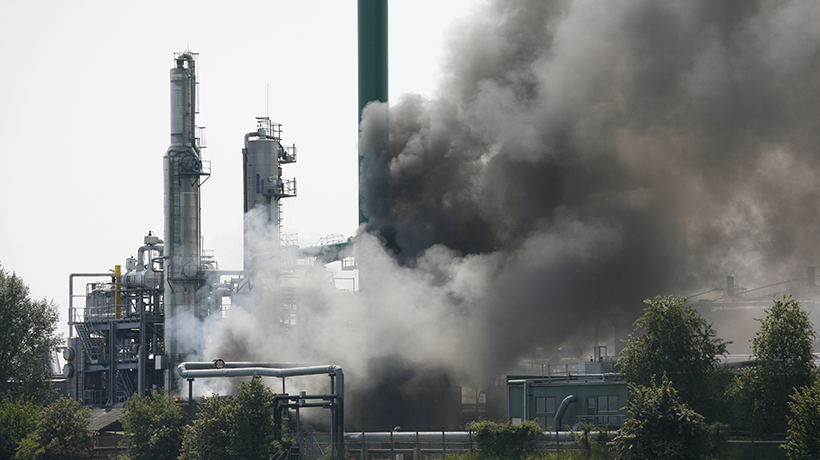When thinking about how to manage a major incident and its impact on an operating business, the three main key areas to address are emergency response, business continuity, and disaster recovery. These disciplines have been defined and described in many different ways, but, ultimately, they are all centered on guiding an organization to more effective and efficient handling of an unplanned incident that significantly disrupts operations. Given this common goal, I’d like to discuss how integrating these areas of responsibility better informs an organization’s emergency management process and helps them bounce back faster.
In my experience, primarily in the oil and gas sector, emergency response, business continuity, and disaster recovery break down as follows. Emergency response typically involves boots on the ground activities, focusing largely on the revenue generating activities of the organization. An example of this in the case of an oil and gas emergency response would be dealing with a well blowout, gas leak, plant malfunction, or any significant threat that might impact production operations. Business continuity on the other hand involves in ensuring that the supporting business functions have been considered in the mix, and that there is an understanding on how the critical business functions will continue, should a major disruption occur at support centers. This could involve downtown headquarters, field offices, supply centers, data centers, and call centers. Derived from business continuity planning activity, disaster recovery focuses primarily on the IT specific activities, with the understanding that IT infrastructure is the foundation for virtually all business processing.
Within these different fields of business operations there is a division of responsibilities. More often than not, there’s also a separation of processes and systems to manage them. There are different skills sets involved in each and all of these skills require a different knowledge and competency base. They vary from determining and understanding critical business relationships and establishing redundant supply chains, to configuring a database for high availability, to controlling a gas leak containing H2S. Based on these differences, the business operations processes and systems to address them have largely grown up independent of each other. But at the core of managing a major incident, the fundamental keys to success are the same across all three disciplines. There is a response organization that must be activated and managed, there is communication that must take place, there are tasks that must get done, and there is planning information that must be available when and where it is needed. Is it not possible to imagine a system that can bring together the emergency response, business continuity planning,and disaster recovery activities within an organization? At Hexagon Safety & Infrastructure, we have a solution that does exactly that.
Practically speaking, what does this system look like? This system uses a common template for developing action plans to help keep everything consistent and a common repository to store specific documented plans. While emergency response plans, business continuity plans, and disaster recovery plans have different content, their content can be stored and maintained within a single system. This content would be maintained in a digital, distributable format that can be accessed anywhere, anytime – either in an interactive checklist format or the original document. This is possible because of the task and documentation management functionality that is available to reference and store this information, allowing first responders, business leaders, IT managers, and any relevant stakeholders access when they need it. These individuals would also be able to access this information from wherever they are located using the various devices available to them.
This system also has a single common response organizational structure to develop and maintain the varied response team charts who are part of the operation. From this, the reporting chains and human resource management in an emergency operation becomes a simplified, familiar process to staff members. This is important to cross training personal within the organization to serve in multiple areas across the response. The emergency response, business continuity, and disaster recovery teams may be organized differently, but the form and representation of that organization can be managed within a common application. When an event is complete you can then use the information collected during its time frame to track service times, costs, and allocation of resources to better understand the business and better value mitigation strategies for the future.
Lastly, having a common communication interface for the management and tracking of tasks, messages, information, and knowledge about the event is pivotal to maintaining an awareness and understanding of what has to be accomplished, what requirements are necessary, and what is complete. Cell phones, conference bridges, email, and texting are all effective communication tools, but they are all disparate and it becomes virtually impossible to collate and organize the communication streams once things are moving. Using one software system as a dedicated tool that can be used across platforms – laptop, desktop, and mobile device – enables communications and task tracking that is centrally managed for maximum value and learning.
In establishing and coordinating the response organization, communicating and tracking tasks, and managing the supporting documentation, you have effectively addressed a significant majority of what all of the emergency management disciplines require to be successful. Add a common operating picture to graphically represent the incident metrics and resource locations and you have a comprehensive and unified single emergency management solution to productively address your business operations and planning requirements.
We invite you to come talk to us. Register for one of our upcoming Canadian Emergency Management Roadshows. These events are free and open to emergency planning, management, and response professionals.















